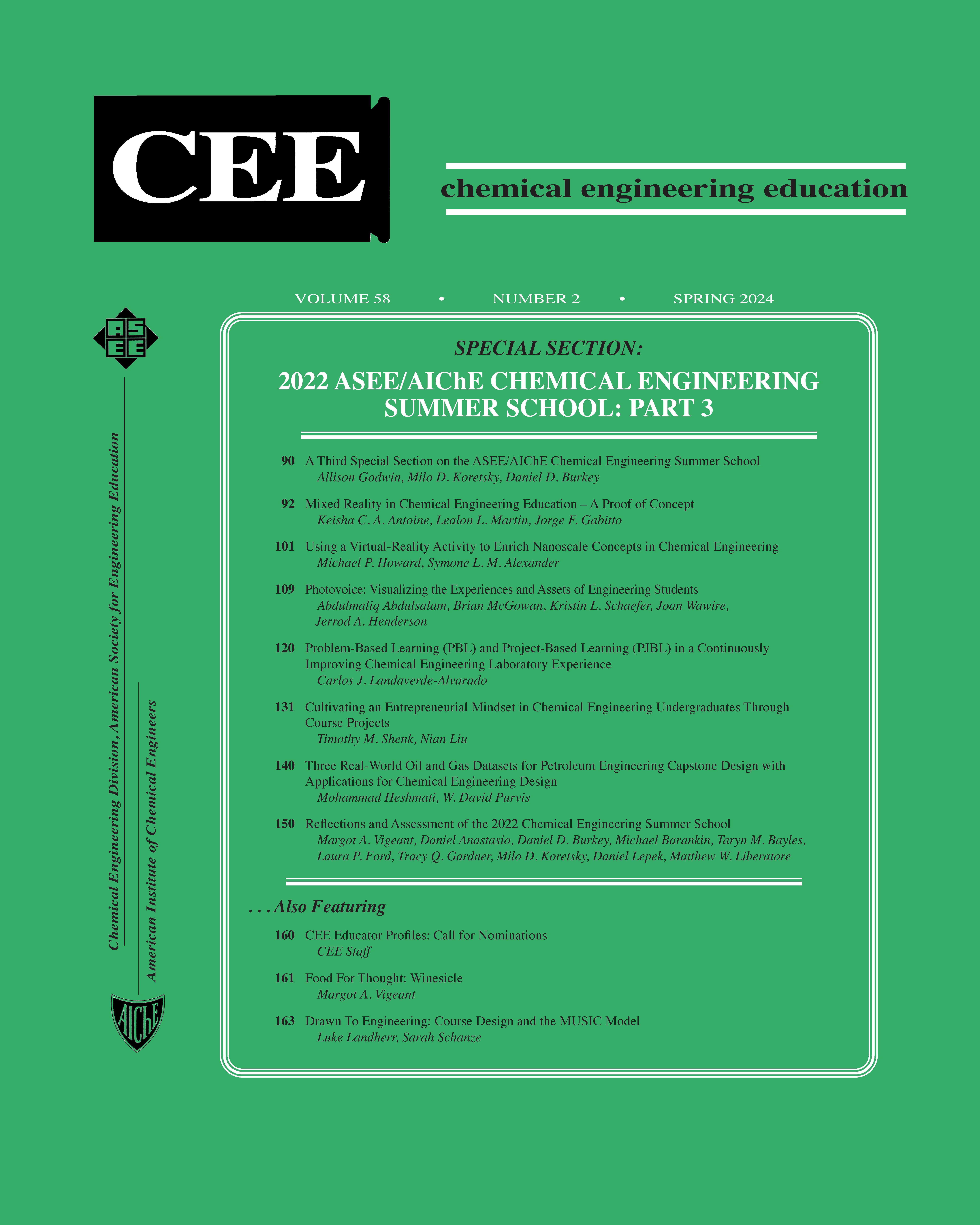Using A Virtual-Reality Activity to Enrich Nanoscale Concepts in Chemical Engineering
DOI:
https://doi.org/10.18260/2-1-370.660-132213Resumo
Chemical engineers must learn to connect concepts across vastly different scales, spanning from molecular structures to industrial processes. Here, we explore the use of a virtual-reality simulation with a companion video of an experiment to help undergraduate students connect nanoscale fundamentals to macroscale engineering observations.
Publicado
2024-03-19
Edição
Seção
Summer School Special Section


